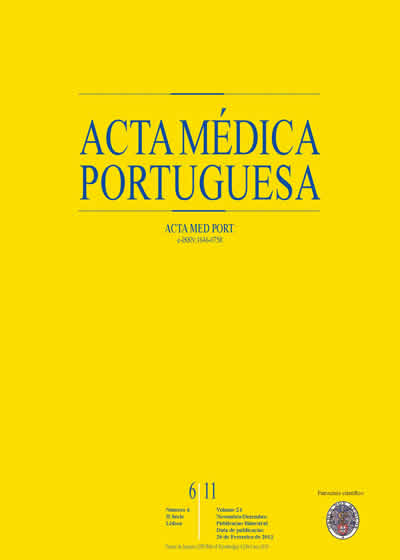Causes and consequences of glycated hemoglobin variability on pediatric population.
DOI:
https://doi.org/10.20344/amp.1425Abstract
Type one diabetes mellitus is the second most frequent disease in childhood, presenting with serious complications when inadequately controlled. The most useful measure of metabolic control is hemoglobin A1c (HbA1c), being essential the awareness of the causes of its variability.to evaluate the effect of age and time of disease on HbA1c; to evaluate the relationship between HbA1c and serum lipid and microalbuminuria values.Observational, transversal and analytic study, based on data obtained in the files of all patients that attain the Pediatric Diabetic Consult. The studied variables were: sex, actual age, diagnostic age, metabolic control and chronic complications. Statistical analysis was made with Excel2003® and SPSS 15.0®. A significance level of 5% was adopted. Results: a 96 diabetic population was obtained. Last year HbA1c average was 8,3% and was less than 7,5% in one third of the cases. Adolescent's HbA1c (8,4%) was significantly higher than in children (7,8%) (p=0,03). Diabetics with a disease longer than five years presented higher HbA1c values (9% vs. 7,8%; p<0,01). Microalbuminuria was present in 9% and lipid abnormalities in 10%. The ones with dyslipidemia had a significantly higher HbA1c (9,7% vs. 8%; p=0,001) as well as the ones with microalbuminuria (10% vs. 8%; p<0,001).In this study it was verified that adolescents and diabetics with a longer time of disease have higher HbA1c. It was also verified that the consequences of a poor metabolic control, such as microalbuminuria and lipid disorder, can be observed even at pediatric age.Downloads
Downloads
Published
How to Cite
Issue
Section
License
All the articles published in the AMP are open access and comply with the requirements of funding agencies or academic institutions. The AMP is governed by the terms of the Creative Commons ‘Attribution – Non-Commercial Use - (CC-BY-NC)’ license, regarding the use by third parties.
It is the author’s responsibility to obtain approval for the reproduction of figures, tables, etc. from other publications.
Upon acceptance of an article for publication, the authors will be asked to complete the ICMJE “Copyright Liability and Copyright Sharing Statement “(http://www.actamedicaportuguesa.com/info/AMP-NormasPublicacao.pdf) and the “Declaration of Potential Conflicts of Interest” (http:// www.icmje.org/conflicts-of-interest). An e-mail will be sent to the corresponding author to acknowledge receipt of the manuscript.
After publication, the authors are authorised to make their articles available in repositories of their institutions of origin, as long as they always mention where they were published and according to the Creative Commons license.









